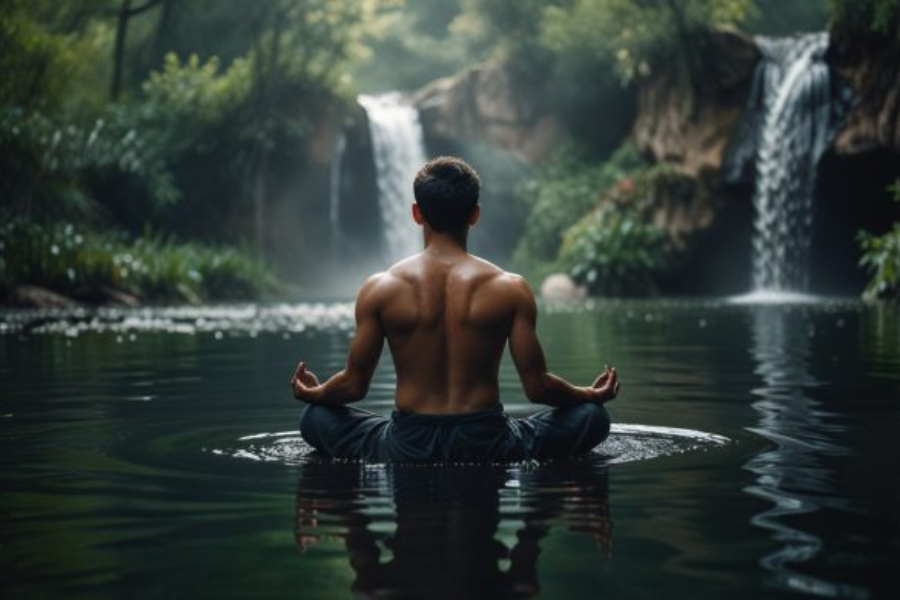Mizukando is a captivating Japanese art form that seamlessly blends traditional craftsmanship with modern design aesthetics. This art form embodies the harmony between the fluidity of water and the structured rigidity of traditional Japanese artistry, representing a unique intersection of cultural heritage and contemporary innovation.
In this comprehensive exploration, we will delve into the origins, techniques, cultural significance, and modern applications of Mizukando. This article is crafted with a focus on optimizing for the keyword “mizukando” to ensure effective resonance with readers, particularly in the USA.
What is Mizukando? Understanding the Essence of this Japanese Art Form
Mizukando is a distinctive Japanese art form that captures the essence of water’s fluidity and integrates it with the solid forms of traditional Japanese craftsmanship. The term “Mizukando” is derived from “Mizu” (water) and “Kando” (inspiration or emotional impact), symbolizing an art form designed to evoke deep emotional responses through the interplay of liquid and solid elements.
Origins of Mizukando: A Historical Perspective
The origins of Mizukando can be traced back to ancient Japan. Early Japanese artisans, inspired by the natural elements around them, began integrating water into their art and architecture. During the Heian period (794-1185), water gardens and flowing streams were central to Japanese aesthetics. Over the centuries, this concept evolved, leading to the development of Mizukando as a distinct art form.
The Influence of Shinto and Zen Buddhism
Shintoism and Zen Buddhism have profoundly influenced Mizukando. Shinto, with its reverence for nature, particularly water, provided the spiritual foundation for Mizukando. Zen Buddhism, emphasizing simplicity and the beauty of imperfection, has shaped the minimalist and contemplative aspects of Mizukando designs. These philosophies ensure that Mizukando is not just an art form but a spiritual practice promoting mindfulness and a deep connection with nature.
Techniques of Mizukando: The Craftsmanship Behind the Art
Creating Mizukando requires both skill and creativity, blending traditional Japanese tools and techniques with modern materials and methods to keep the art form relevant.
- Water Element Integration: Mizukando integrates water or water-like elements in various ways, such as using reflective surfaces, creating water-inspired patterns, or incorporating actual water features. The aim is to create a sense of movement and fluidity within a static form.
- Use of Traditional Japanese Materials: Traditional materials like wood, bamboo, and washi paper are often used in Mizukando. These materials harmonize with water elements and root Mizukando in Japanese cultural and artistic traditions, even as it evolves with modern design elements.
Contemporary Innovations in Mizukando
While Mizukando is rooted in tradition, contemporary artisans are pushing its boundaries. Innovations include modern materials like glass, metal, and acrylics, as well as technological elements like LED lighting and interactive features. These innovations enable Mizukando to appeal to a global audience and adapt to current architectural and interior design trends.
The Cultural Significance of Mizukando: More Than Just Art
Mizukando holds deep cultural significance in Japan, reflecting the Japanese people’s connection with nature, appreciation for simplicity, and ability to find beauty in the transient.
- Mizukando and the Japanese Concept of “Mono no Aware”: The Japanese concept of “Mono no Aware,” or the awareness of the impermanence of things and a gentle sadness at their passing, is deeply embedded in Mizukando. The fluidity of water symbolizes the transient nature of life, encouraging viewers to appreciate fleeting moments and find peace in the flow of time.
- The Role of Mizukando in Japanese Architecture and Design: Mizukando significantly impacts Japanese architecture and design, often incorporated into gardens, teahouses, and modern buildings. Water elements in these spaces create tranquility and balance, embodying the principles of harmony and simplicity central to Japanese design.
Mizukando in Japanese Gardens
Japanese gardens are renowned for their serene, meditative qualities, and Mizukando plays a crucial role. The strategic placement of water features and fluid designs within these gardens exemplifies Mizukando, fostering a space for contemplation and a deep connection with nature.
Mizukando in Contemporary Japanese Society
In modern Japan, Mizukando remains a respected art form celebrated in cultural festivals and exhibitions. It influences contemporary architecture and design, with many Japanese architects and designers drawing inspiration from Mizukando’s principles to create spaces that blend traditional and modern aesthetics.
Mizukando Beyond Japan: A Global Influence
Mizukando’s appeal extends globally, inspiring artists, designers, and architects worldwide. Its blend of tradition and modernity, along with its focus on natural elements, has influenced various creative fields.
- Mizukando in Western Architecture and Design: Western designers are increasingly attracted to Mizukando for its ability to create serene, dynamic spaces. The integration of water elements and fluid designs in modern architecture, including luxury homes and public buildings, reflects Mizukando’s influence. This trend is evident in the growing popularity of biophilic design, which aims to incorporate nature into built environments.
- Case Studies: Mizukando-Inspired Projects: Several notable projects have drawn from Mizukando principles. For example, a luxury hotel in California featured Mizukando-inspired water elements throughout the property. An art installation in New York City utilized reflective materials and water-inspired designs to create a space that promotes mindfulness and reflection.
The Future of Mizukando: A Global Art Form
As global interconnectedness grows, Mizukando is set to become a truly international art form. Its principles of harmony with nature, simplicity, and appreciation of impermanence resonate with contemporary concerns about sustainability and mindfulness. As artists and designers worldwide adopt Mizukando techniques, the art form will continue to evolve and inspire future generations.
FAQs
What makes Mizukando different from other Japanese art forms?
Mizukando is distinctive for its focus on integrating water elements and creating fluid, dynamic designs. Unlike other Japanese art forms that emphasize simplicity and harmony with nature, Mizukando specifically aims to capture the essence of water and its emotional impact.
Can Mizukando be incorporated into modern home design?
Yes, Mizukando can be integrated into modern home design through water features, reflective surfaces, and fluid design patterns. These elements create a serene and harmonious living space that is both aesthetically pleasing and emotionally soothing.
Is Mizukando practiced outside of Japan?
Mizukando has gained recognition outside Japan, especially in architecture and interior design. Its principles are being embraced globally by designers drawn to its emphasis on nature and fluidity.
How can I learn more about Mizukando?
To learn more about Mizukando, consider visiting Japanese art museums, attending cultural exhibitions, or participating in workshops offered by artisans specializing in this art form. Online resources and books on Japanese art and design also provide valuable insights.
What are the key materials used in Mizukando?
Traditional materials include wood, bamboo, and washi paper. Modern Mizukando alsoincorporates contemporary materials like glass, metal, and acrylics, creating diverse and innovative designs.
Conclusion
Mizukando transcends being merely an art form; it reflects the Japanese way of life and philosophy. Its blend of water elements, traditional craftsmanship, and modern design principles makes it a unique and timeless practice. As Mizukando gains global recognition, it bridges cultures, offering a universal language of beauty, simplicity, and emotional impact. Whether in traditional Japanese gardens or contemporary urban spaces, Mizukando remains a profound expression of the harmony between humanity and nature.
By exploring and appreciating Mizukando, we gain insights into Japanese culture and find inspiration for creating spaces and experiences that resonate deeply with the human spirit. As this art form continues to evolve and influence new generations, its legacy will endure both in Japan and worldwide.
Discover the latest tech trends and innovations at Kongo tech.



